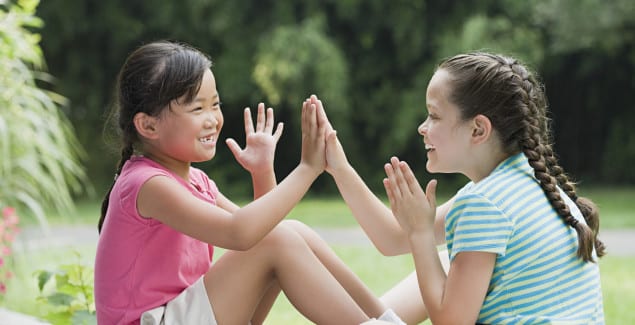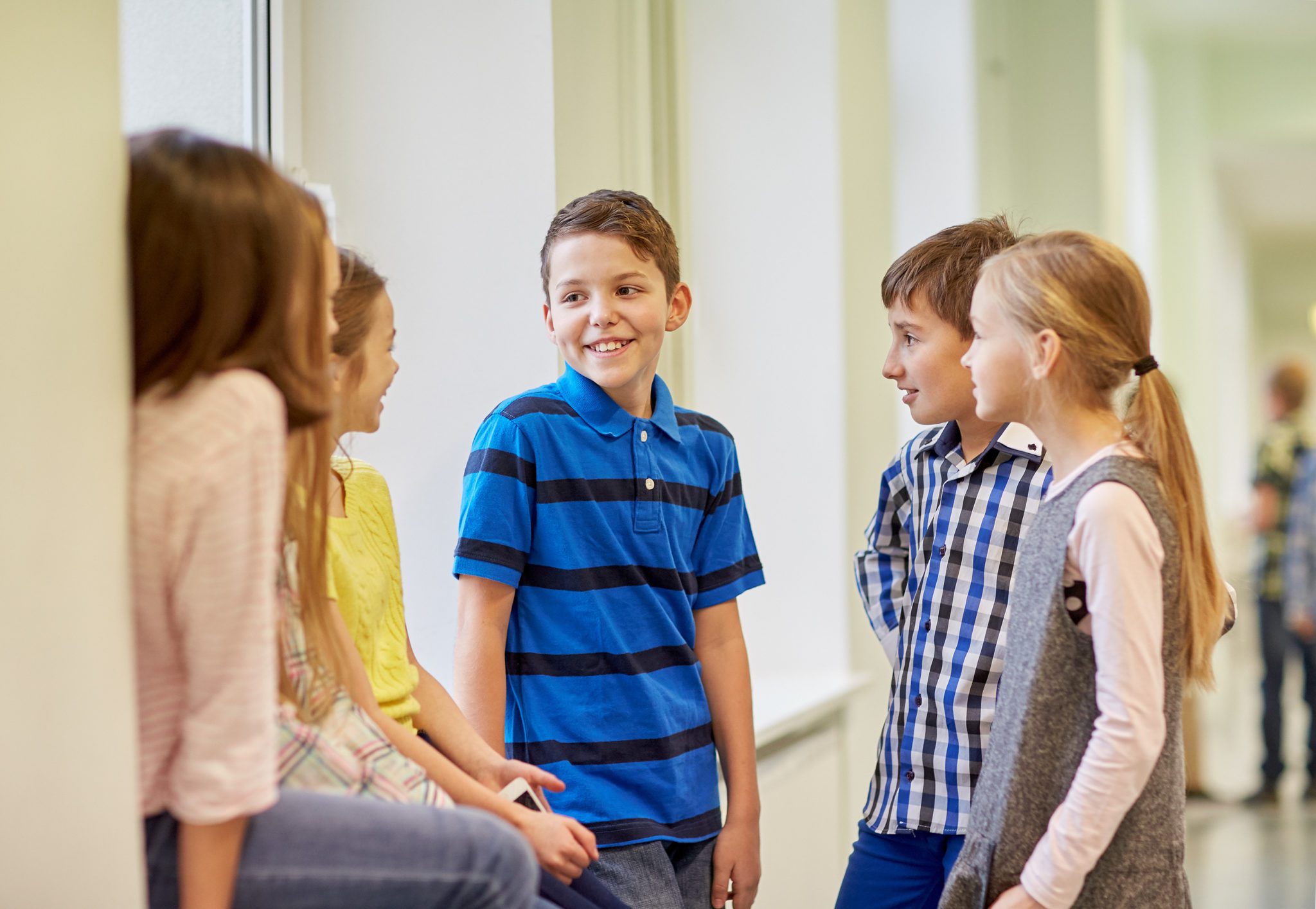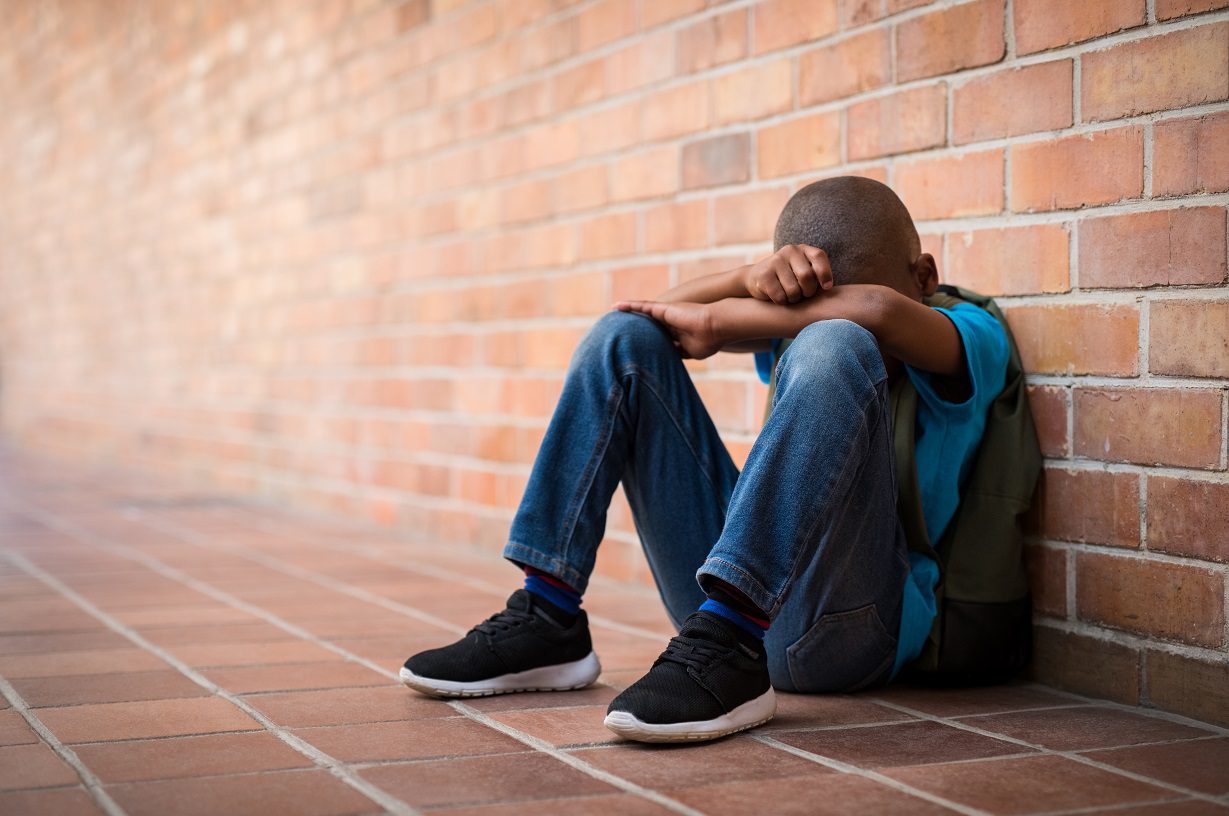Helping Kids Fit In At School

Posted in: Grade School, You & Your Family
Topics: Child + Adolescent Development, Relationships
For a good part of third grade, I sat by myself in the school cafeteria during lunch.
I don’t exactly recall feeling lonely during those isolating moments with my peanut-butter-and-jelly sandwich, but I certainly feel sad as I look back today.
I just didn’t fit in—and that’s a truly awful feeling. I think, since I hadn’t yet experienced that before, that I didn’t quite know how to put into words for my parents how miserable I was.
Let me set the stage for you.
My parents had moved me from an elementary school where I was clearly not thriving to an “extremely progressive hippy” school a bit out in the country. The fact that this was an “extremely progressive hippy” school in suburban Kansas that was run by nuns just adds to the paradox of how a school, where the sole mission was social inclusion, could miss a sad, lonely kid getting jelly on his face from 11:30 to 12pm every weekday in the same corner of the rainbow-painted cafeteria.
I wasn’t the kid my peers would naturally approach. My pants were either too tight or too loose. My shirts clung to the baby fat that provocatively hung off the sides of my awkward frame. I was a bit of a dork, I suppose, and even a hippy school run by nuns who favor social inclusion and rainbows is bound to have some kids who feel like dorks. I took to sitting carefully in the shadows, my head down, my checkered Thermos drained of the lemonade my mom had packed for me.
Then, about three-quarters of the way through the school year, a teacher wandered into the shadows next to me. Sister Susan was a stern gal, and a great but formidable teacher. She had been to El Salvador for protest marches (I learned this about her later), and she approached all situations with a sense of purpose and determination.
I saw her pursed lips and heard the way her sandals made sharp knocks against the Formica floor, and I honestly thought I was in trouble. After all, I’d gotten in a lot of trouble at my previous school, and I think part of the reason I kept to myself was so I could avoid the outcomes I’d suffered in grades K-2.
But instead, Sister Susan smiled at me and sat down.
“Do you know Greg?” she asked.
I don’t even know you, I thought, but I simply shook my head “no.”
“Well, he doesn’t know you, either,” Sister Susan replied. She pointed to Greg, who was sitting with two other boys about three tables over.
She didn’t, as I was afraid she might, make me go sit with him. But, she did make sure that Greg and I were seated at the same work station in the next period. It turned out that Greg loved make-believe, as did I, and the friendship between us came naturally. As we got to know each other, we spent our weekends stomping around with rocks over our heads, crushing imaginary mountains as we pretended to be Godzilla, or Mothra, or any of the other giant creatures to which we aspired.
I don’t think Sister Susan saw me as “that kid who didn’t fit in;” she saw me as a kid who needed help fitting in. There’s a fundamental difference.
As child psychiatrists, we are often asked to advise parents and schools on how to help kids who don’t seem to “fit in.” It’s a funny metaphor, really. What are they fitting in to? Why can’t they fit in to whatever it is we expect them to fit in to? And, do we really want them to fit in at all?
The metaphor emphasizes the extent to which we as humans are, for the most part, pack animals, our brains wired for social connections. This makes it that much starker when a child feels unable to connect. And, it means that we feel for the kid who doesn’t seem to fit.
From a developmental perspective, we start working on fitting in around age 4 or 5. That’s when best friends develop, and when the absence of a best friend can be worrisome to professionals when they’re interviewing young children. Sister Susan, for example, didn’t aim to make me known to everyone; she aimed to give me a best friend—and she got it right with Greg. If she hadn’t happened to guess right, I bet she’d have kept trying until she found a match.
For younger children, open lines of communication between parents and teachers are crucial. Parents shouldn’t hesitate to ask teachers if their child is doing well socially, and teachers shouldn’t be shy in expressing their concerns. Most importantly, a bit of matchmaking is a community effort. Sister Susan introduced me to Greg, but she also sent a note home telling my parents about what she had done when it appeared to her that Greg and I had hit it off. Fitting in takes a village.
As kids age, the directed matchmaking can still happen, but it needs to be subtler. There might be social skills training—for example, instructions on how to call another child and ask him or her to come over. I had a patient whose whole world opened up when he discovered (through his parents’ gentle prodding) that kids his age gathered every Saturday at a local store for old-fashioned role-playing games like Dungeons & Dragons. Other kids might connect through online communities; once vetted by parents, these online environments can help very shy children become more open and interactive.
For all children, fitting in is an extremely important developmental task. It is through our social interactions that we learn to process the subtleties of human connection. To that end, a child not fitting in is, by definition, a child in trouble. There could be depression, anxiety, problems at home, developmental delay, or simply a mismatch in perceived social groups. Whatever the reason, parents and teachers must take action. That’s the key to breaking through the difficulties and misery of social isolation. That’s the key to helping a child grow up.


 Share
Share Tweet
Tweet





